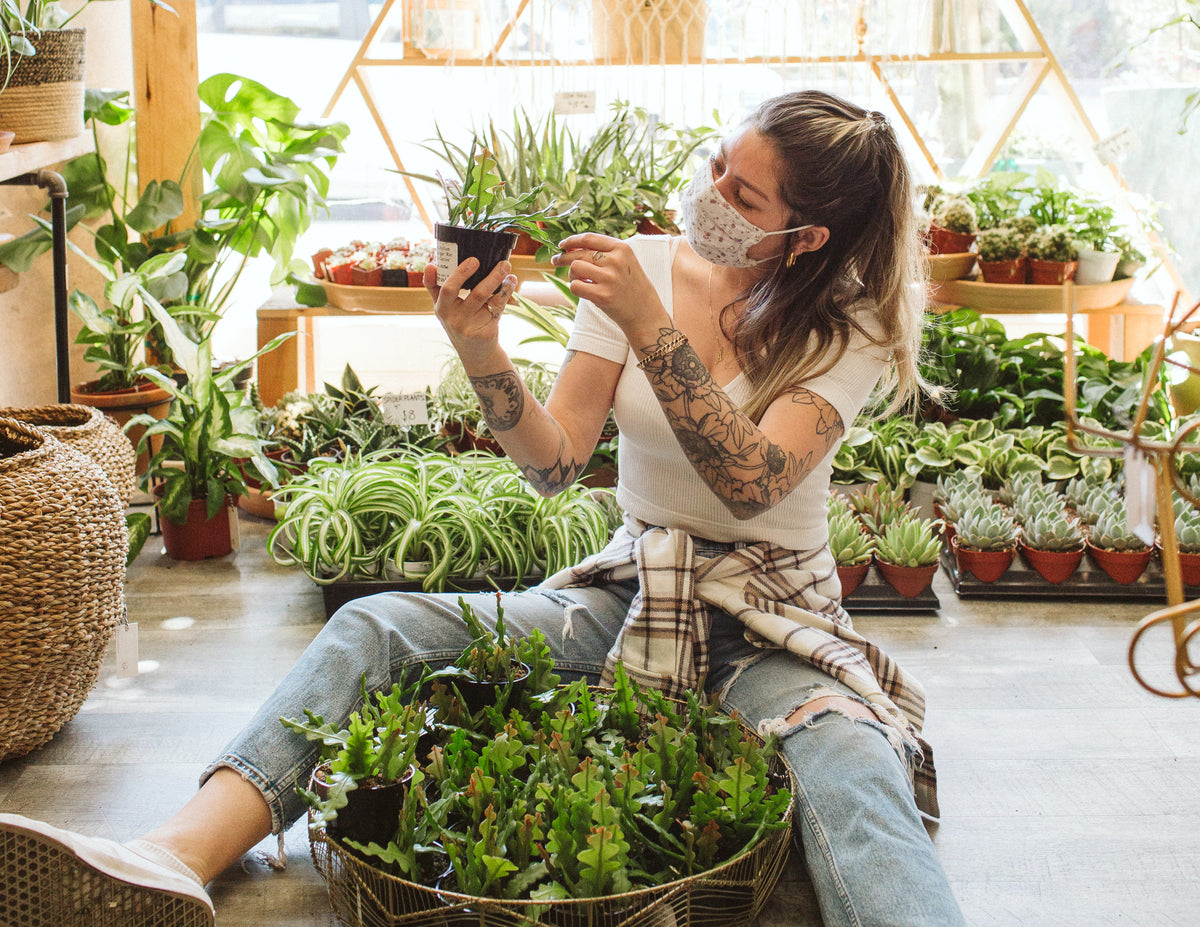
Indoor plant pests are annoying, but a very real part of plant parenthood, and looking up how to deal with them is certainly one of the quickest ways to feel itchy - sorry.
Whether strolling in through open doors and windows or hitching a ride into your home via fresh produce, flowers, potting soil, dirty planting containers, other plants, or even ants, pests can show up from a multitude of sources, making them hard to avoid.
A Quick Note About Our Plants
When purchasing plants wholesale, there are different levels of plant quality a buyer can choose from, which is why plant prices can vary greatly from different stores. At WildFlora, we like providing the best, so we choose grade A plants from a nurseries that have California Agriculture Inspectors come weekly to approve and release healthy plants to avoid passing on any infected plants. This is very important to us, since pests in any of our products could spread to our entire store's stock. Our staff is trained to look for signs of pests so we can do our best to help you avoid bringing a headache home with you.
FIRST AND FORMOST
When you notice a pest on a houseplant, if you have other plants, separate the problem child from the rest to avoid a larger infestation.
SCALE
One of the trickier pests to tackle, these little guys find a home on your plant, clench in, and stay put until they die. Sometimes before you notice the actual pests, you'll see a sooty-looking mold. This happens because they inject a sugary substance into the plant when feeding, which attracts mold.
Scale themselves look like little tiny bumps instead of a bug, so sometimes you won't notice them unless you're looking close. They can come in a range of colors and will also sometimes tuck into hard-to reach places like leaves' armpits.

If you find a cluster of them, it might be best to prune and discard that portion of the plant, otherwise here's one way of de-scaling.
- Cover the soil in cling wrap to avoid letting the pest fall into it while you de-scale the plant.
- Remove the scale on the leaves with a cotton ball soaked in alcohol. Most insecticides won't penetrate the scale's shell, but getting them directly with the alcohol will help remove them. You may need to use your nails, a toothpick, or a toothbrush in order to scrape and get at the stems and crevices. This part is tedious, but will be your best defense to get ahead of the problem. Once you're done, give your plant a good rinse.
- Next we'll want to handle the crawlers - the stage of scale when they're still mobile (not to mention, super difficult to see) and looking for their forever leaf. For this you can buy neem oil, a natural, non-toxic remedy, at most garden centers, and you'll need to use it once a week for about 10 weeks in order to keep catching the crawlers as different generations emerge. Neem oil is also effective in helping get rid of aphids, mealybugs, and whiteflies as well.
MEALYBUGS
These fuzzy-looking pests are related to scale, so you'll follow the same steps. However, they stay mobile their whole life cycle, making these boogers slightly trickier to tackle. After the initial alcohol rub/scrape, you'll want to check your plant daily for a while, catching mealybugs who have moved into view.

Additionally, you should check and clean/disinfect your planter pot with alcohol rub, since they will often crawl around the outside and lodge into crevices on the container as well. This step can also be applied when dealing with scale, when trying to catch the crawlers.
FUNGUS GNATS
If you notice a crew of gnats flying around your plants, it means the whole family has moved in. Fungus gnats lay babies in the soil, so you'll have to follow a few steps to handle the problem thoroughly.

- Double check your plant's water needs and reduce down to the lowest you can without hurting it. Since they love moist soil, this will help make the soil less hospitable to the gnats.
- Sticky traps are available at most stores - make sure to get the yellow ones for Fungus gnats since they're drawn to that color.
- Next, purchase Mosquito Dunks or Bits - depending on your plant size, you can break a chunk of one of these and dissolve it in water overnight, then remove the undissolved portion, and pour the mixture over the soil. It will then create a plant-safe bacteria (BTI) that infects bug larvae. Use this mixture for the next couple months when watering. After that, an application should keep the soil gnat larvae-free for a year-ish.
- If the top soil of a plant isn't ideal for it's nursery, a fungus gnat will move on to another plant. Some websites suggest a 1/2" of sand at the top of your pot for this reason. We like to top all of our plants off with a layer of gravel, which is a little cuter than sand, in our opinion.
- Cover drainage holes at the bottom of your pot with a small piece of fabric that lets water through but not the flies, since they sometimes get sneaky and attempt this back door.
- Lastly, when potting plants at the shop, unless a particular plant calls for continually moist soil, we usually choose the cactus and succulent mix, since it drains faster, helping house plants live healthier, longer lives.
Dealing with pests can be intimidating, but you've totally got this, and your plants will feel and look a whole lot healthier post care.



